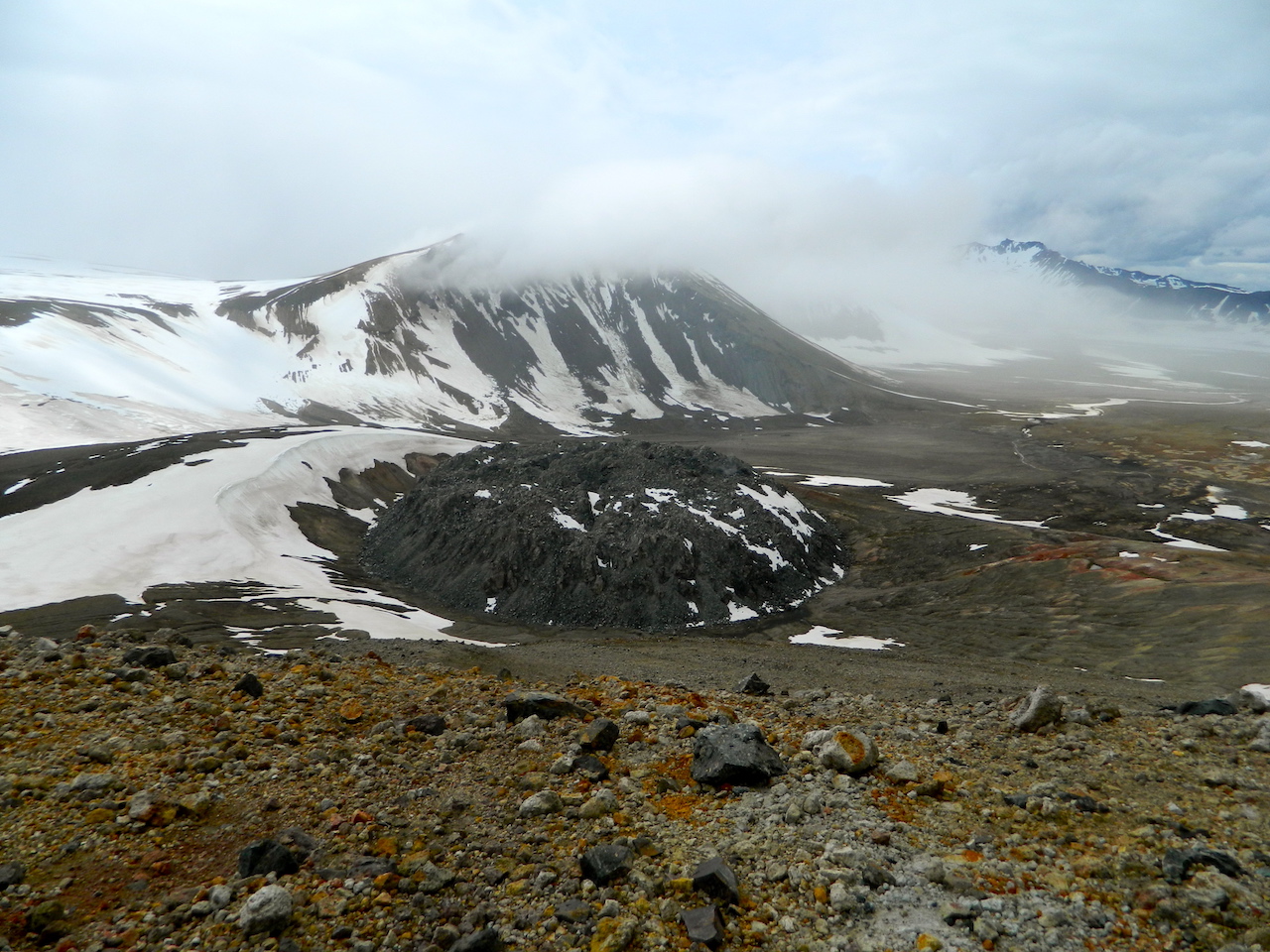There's nothing like sleeping beneath an active volcano to really put things in perspective. A backpacking trip in Katmai’s Valley of Ten Thousand Smokes can humble humans by bringing them face-to-face with the power and destructive force of the landscape.
The trail-less expanse of the Valley of Ten Thousand Smokes extends for over 40 square miles beneath a spine of volcanoes dotting the edge of the Alaska Peninsula. In 1912, walls of ash and pumice known as pyroclastic flows spilled from the volcano Novarupta, filling a once-green river valley. Over the course of three days, the valley was transformed into a desolate moonscape. The rock that filled the valley was hot enough to vaporize the river and groundwater beneath it, erasing the river’s path from the landscape. Instead of discrete rivers, steam vents erupted all across the valley floor. Today, the valley floor has cooled enough to allow the river to reclaim a path through the ash. The destruction caused by the pyroclastic flow has left a gently sloping, bushwhack-free landscape—relatively easy hiking conditions through the wilderness of Katmai National Park.
The ash and pumice that extinguished the Ukak River valley show traces of steam vents called fumaroles. Photo courtesy of M. Fitz.
I have explored this valley in years past, following many of the same routes, but no trace of my footprints remains—the landscape has erased them, folded them back into the ash that still blows across the valley floor. Winds from the turbulent Shelikof Strait regularly race between mountain passes, scouring the barely-revegetated land. On this day, I see scattered tracks of what little life travels across this wasteland: bear, caribou, lone hikers. I can imagine another windstorm redistributing ash and pumice, filling in the prints I see now, leaving a blank slate for future valley visitors.

Bear tracks cross the ash floor of the Valley of Ten Thousand Smokes. NPS Photo.
For me, this trip is to new territory: Mageik Lakes, resting over a mile apart at the base of Mt Mageik, a four-peaked volcano capped by glaciers. This journey requires crossing the River Lethe in an unfamiliar spot—a daunting task given the ice-cold, mud-brown, swift-moving water that carves mercilessly into the ash floor. Hikers have lost their lives to river crossings in the Valley of Ten Thousand Smokes. Finding a spot that is wide enough, shallow enough, and calm enough to allow a human to win the fight against the current is not easy. It requires some picking along the river's roaring edge, testing the water by plunging a trekking pole into the murky ripples and hoping the pole hits solid ground. I remind myself that I have the power to turn around, to forfeit the hike and let the Lethe win this one. Luckily, I find a relatively safe spot to cross, and the journey continues to a wind-scoured hillside beside East Mageik Lake.

Mt Mageik looms over the River Lethe. NPS Photo.
Blissfully, my hike is under a mostly sunny sky, with no rain and a barely perceptible breeze. These are not the weather conditions I expect when I hike on the Alaska Peninsula. With no fog, rain, or blowing ash to obscure my view, I can look behind Baked Mountain and behold the 200-foot tall dome of Novarupta, the source of the volcanic eruption that created this landscape 104 years ago. Novarupta still steams due to hot magma deep beneath the surface—like a smoking gun that only recently went off. Behind Novarupta lies the scarp of Mt Katmai, a volcano whose peak collapsed as magma beneath it flowed out through Novarupta. Just beyond Katmai, another volcano: Mt Griggs. And straight ahead, Mt Mageik, with Mt Martin spitting out substantial amounts of steam just beyond. I am surrounded by the Katmai cluster, one of the world’s densest concentrations of stratovolcanoes. The steaming peaks serve as a reminder that this is an active landscape capable of fomenting catastrophic change.
The blocky dome of Novarupta marks the site of the 1912 eruption. NPS Photo.
The Valley has the power to erase not only my footprints, but the power to erase me. Sharing space with raging rivers and venting volcanoes humbles us, challenges our basic survival skills, and puts in perspective the pressures we face in our everyday lives. A devastating landscape like the Valley of Ten Thousand Smokes reminds us that no matter how powerful humans might feel, we can’t compare to the power wielded by the natural forces around us.


